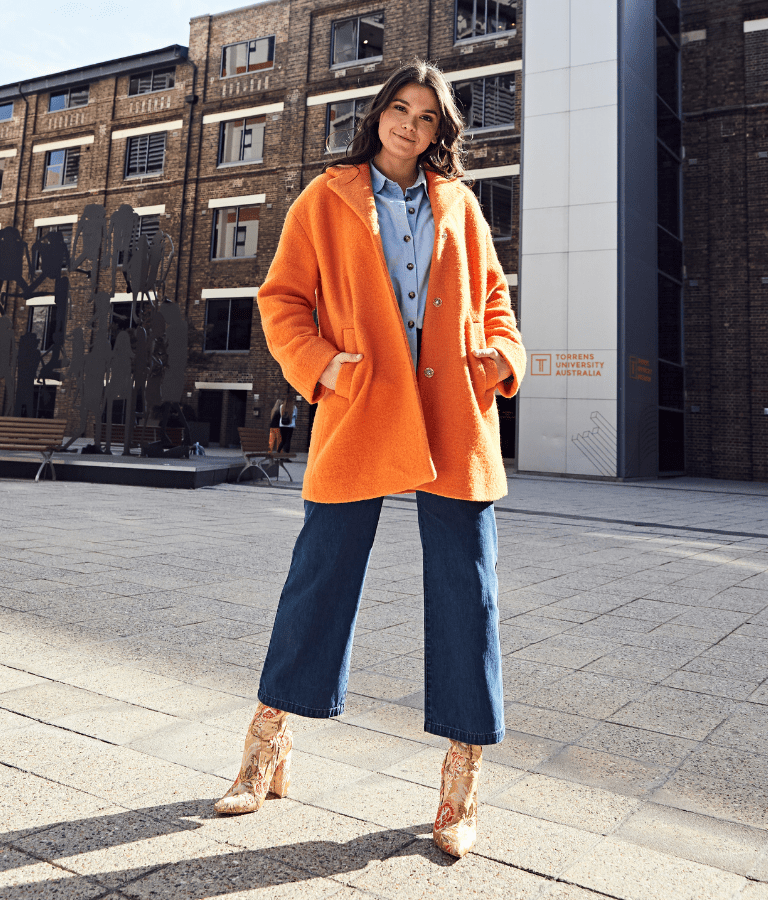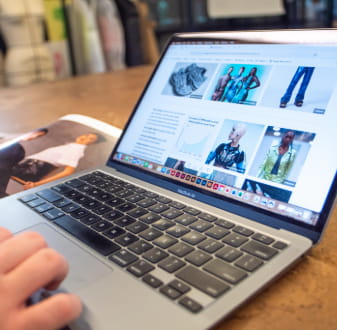Speaking at our recent Design Career Talks event on Ultimo campus, Brie shared insights on starting an interior design career and her experience studying at Billy Blue College of Design at Torrens University Australia.
1. Your career is a journey
Long gone are the days where you’d finish your course, land a job and stay with the one organisation until you retire. Instead, think of your winding path from graduate to industry leader as a journey. “I’m a really good case study because I’ve done a lot of things since I graduated,” says Brie. “I started with a couple of internships and from there I was offered a job as a junior designer that I did for a year … That was across hospitality and commercial design, but I decided that actually I wanted to be in residential, so I moved into the residential space where I got a position as a senior stylist for one of the largest property styling groups in Sydney. Most recently I’ve got a new job as Head of Interiors and Product for a start-up, which is very exciting.”2. Say yes then figure it out
In 2018, Brie completed the coveted Billy Blue x Vogue Australia internship. But before she landed it, she didn’t feel as ready for the internship as she could have. “Opportunities may arise that you don’t feel equipped for,” she explains. “When I was going for an internship at Vogue Living, I went to a teacher after class and said, ‘I need to put this package together to try to get this job – it’s probably the most sought-after interiors internship in the country… How am I going to do it?’ They said, ‘Just say yes then race around and figure it out.’ So that’s my philosophy. Anything that comes my way, if I don’t have the skill set, I say yes. Then it’s a mad dash behind the scenes trying to actually figure out how I’m going to execute.”3. Be creative with your skills
Brie argues that design skills aren’t siloed skills – they’re very portable, and you can recalibrate them when you’re in a new situation: “That plays into the creativity that we develop as well as thinking about how to do things in different ways that someone analytical may not. Even within just purely your design skills, but also in terms of ‘How can I make myself more hireable? What can I do in terms of updating this portfolio?’ We’re very adaptable and we’re very fluid.”4. “I don’t like that” doesn’t mean “I don’t like you”
This is a big lesson for creatives to learn, and it’s something Brie wishes she’d realised earlier in her career. “One of the biggest things for me is to not take things personally,” she reveals. “As creatives we put our blood, sweat and tears into something as simple as a design presentation. If that’s not met with the cheering you had anticipated, it can be extremely hurtful if you haven't built that designer skin. I’d tell my student self that people aren’t going to like your ideas all the time, and that’s okay. If people like your ideas all the time you’re possibly too mainstream.”5. Think of your assignments as your résumé
You’re not just at Billy Blue to get great marks and enhance your skills, you’re also putting together a body of design work that you can use to demonstrate your talents in the future. As Brie puts it, “When you’re studying, take your assessments seriously. What I mean by that is, don’t do them at the last second, don’t think of them as an assessment… think of them as the résumé of your first job. Do those portfolios like that is the only thing you’re going to use to try to get a job; then when the time comes you’ve actually got an incredibly impressive portfolio. People looking at it know you’re a student – they don't expect you to have built and designed a restaurant, they just want to see that you’ve done the work and you’ve done it properly.”6. It’s not all about aesthetics
Finally, you might need a change of attitude when you’re moving from making pretty things for yourself to landing and satisfying clients. That means having to dig into the less beautiful side of the industry. “As a student, you’re very aesthetically minded,” says Brie. “If things look beautiful you think that’s a success, but employers don’t want to see just beautiful mood boards because most people can put together a nice mood board. The stuff I thought was uglier as a student – for example, technical drawings were so ugly to look at, I didn’t want them for my portfolio. But that’s actually what they need to see.”Want more? Here's Brie's full interview at our Design Career Talks:





